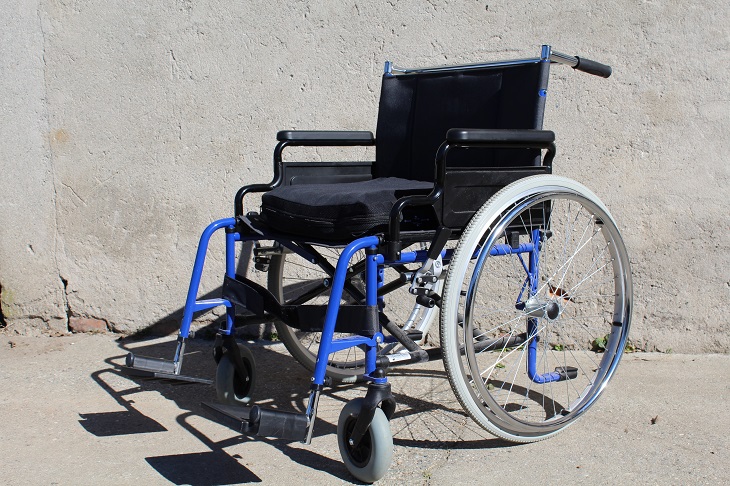Everything To Know About Disabled Veterans Plates

There are a variety of disabled parking badges available in the United States. In many states, permanent, temporary, family, wheelchair, and group/program/organization placards are available. In most states, a permanent license plate is available for disabled people who own their own vehicle and have a permanent disability. The final type of disabled parking badge is a Disabled Veterans plate. Disabled Veterans plates are available in all states and they offer their holders some unique advantages, not least of which is the kudos and respect that is afforded to military veterans by society at large for having fought for their country and sacrificed themselves for such a noble cause.
If you are a disabled military veteran, you very likely qualify to utilize Disabled Veterans parking benefits. Having one of these license plates on your vehicle can improve your quality of life no end. Here is everything you need to know about getting a Disabled Veterans plate.
Qualifying Conditions
When applying for a disabled placard or regular, non-veterans disabled plate, an applicant needs to have a consultation with a registered medical professional. However, when you are applying for a Disabled Veterans plate, this step can be skipped. This is because the U.S. Department of Veterans Affairs will already have your details as a Disabled Veteran on file. This means that instead of having a physician sign your application form, you instead need to have a representative of your U.S. Department of Veterans Affairs Local Regional Office verify your disability.
Your disability does not need to be 100% attributable to injuries sustained while on military service. It varies state by state, but the average requirement is that your disability be at least 50% caused by injuries sustained while on service. If your service-related injuries involve the amputation of a leg, then in most states this only needs to make up 40% of your disability.
The most common service-related physical disabilities that qualify a person to use a Disabled Veterans plate are:
- Any condition that makes it impossible to walk a certain distance without needing to stop for rest;
- Any condition that necessitates the use of a walking aid such as a wheelchair, cane, Zimmer frame, brace, or crutches;
- Heart disease (designated as Class III or Class IV by the American Heart Association);
- Chronic back pain or spinal injuries;
- Amputation of a limb or part of a limb;
- Lung disease;
- Any condition that necessitates the use of a portable oxygen tank;
- Cancer;
- Toxic exposure impairments;
- Agent Orange impairments;
- Diabetes; and
- Contaminated groundwater impairments.

Rights of Disabled Veterans Plate Holders
The specific rights a Disabled Veterans plate affords its owner vary slightly state by state. However, in all states, a Disabled Veterans plate-holder can park in any designated “disabled” parking spaces (marked with the Universal Access Symbol). In a majority of states, a Disabled Veterans plate-holder can park in any metered, time-restricted, on-street space for free and with no time restriction.
Disabled Veterans Traveling Outside Their Home State
Disabled Veterans plates from any U.S. state are recognized in all other U.S. states. However, because rules and regulations can vary slightly state by state, it is always a good idea to check with the state you are intending to travel to and find out the exact details of their specific disabled parking program.
Applying For a Disabled Veterans Plate
The exact procedure for applying for a Disabled Veterans plate tends to vary slightly state by state. Each state has their own version of an application form, which can be downloaded from the website of either the local Department of Motor Vehicles or the state tax collector’s office. The application form will need to be completed by the applicant and a representative of the U.S. Department of Veterans Affairs local regional office. Then the form will need to be submitted, either in-person or by mail, to the local DMV office or tax collector’s office, usually along with a copy of the applicant’s driver’s license or ID, and any appropriate fee.

Costs and Fees
Costs and fees of getting a Disabled Veterans plate are different in each state. In some states there is no fee, in others it is as little as $1 a year, and in others it is between $10 and $20.
Personalized License Plate Options
Most states offer personalized Disabled Veterans plate options for a small extra cost. A popular choice is a plate with the emblem of the arm of the military or regiment that the holder served with.
Renewing or Replacing Disabled Veterans Plates
Plates expire after either one year, two years, or when the vehicle owner’s license or ID expire. To replace an expired, lost, damaged, or stolen Disabled Veterans plate, it is necessary to contact the agency that issued the original plate, and perhaps pay a small replacement fee. Enjoy the ease provided by Disabled Veterans license plate benefits.